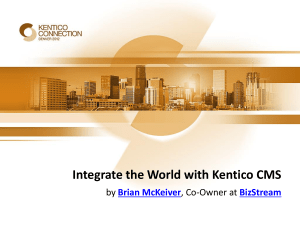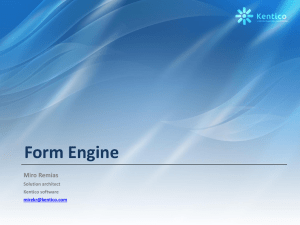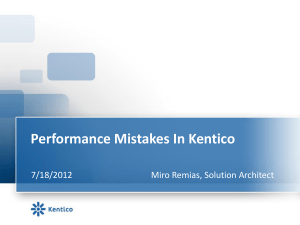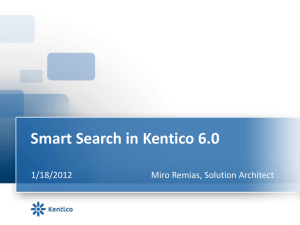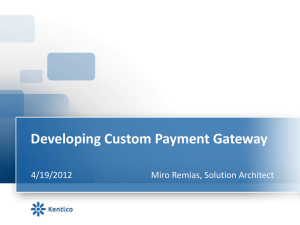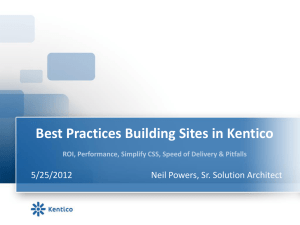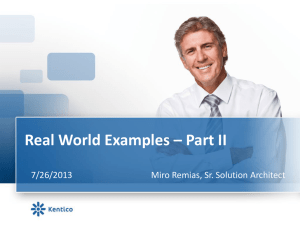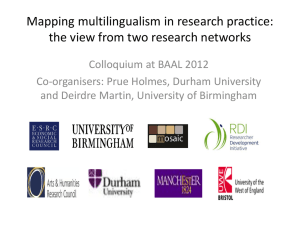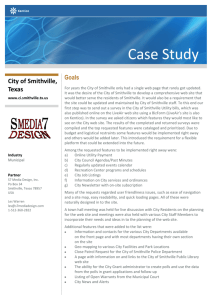the presentation - DevNet
advertisement
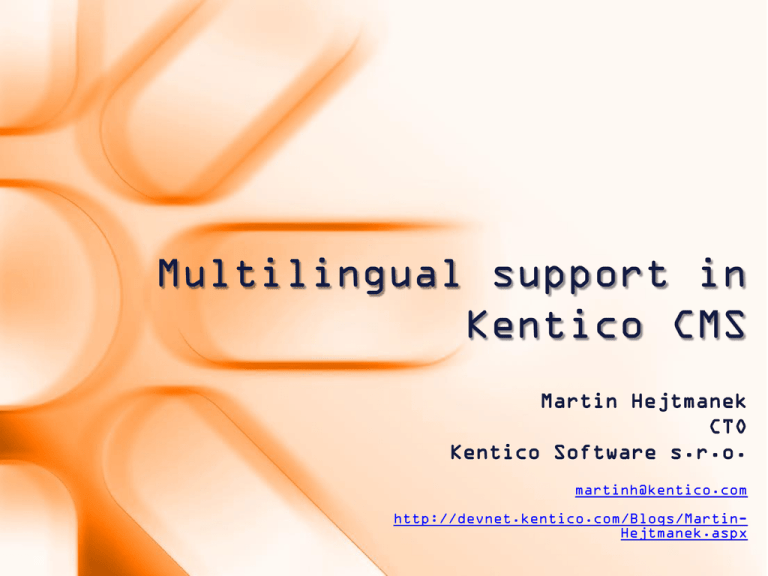
Multilingual support in
Kentico CMS
Martin Hejtmanek
CTO
Kentico Software s.r.o.
martinh@kentico.com
http://devnet.kentico.com/Blogs/MartinHejtmanek.aspx
Agenda
1) How to configure multilingual
site
2) Default culture and combine
options
3) Managing multilingual content
4) Displaying multilingual content
5) Multilingual URLs and aliases
6) How the content is stored in the
database
7) Resource strings and localization
How to configure
multilingual
• Every web site is multilingual by
default
– It only has a single language allowed
• Just allow additional cultures
• Choose the default language
– In site properties
• And translate the content in
CMSDesk
Default culture /
Combine
• Default culture = main web site language
• Combine with default culture (Settings)
– When enabled, all non-translated documents are
available from default culture
= partially translated web site with complete
content
CZ, combine
= HOME (CZ)
Products (CZ)
Disclaimer (EN)
– When disabled, only translated documents are
available
CZ, not
Products
(CZ)
= HOME (CZ)
= combine
no cross-language
content
Managing the content
• With multiple cultures, CMSDesk provides
culture selector (switches the language
context)
• Content tree always displays all
documents
– Even non-translated ones, priority:
Current culture -> Default culture -> Any other
culture
• Editor switches between languages
– Gets reported when the translation is missing
Not translated
– Can copy content from another language
Displaying the content
• By default, all web controls use current culture
• You can configure the culture in control
properties
• Priorities of languages
– Specific culture
– Default culture (only with combine)
– Any other first found culture (only for all option,
nondeterministic)
• ##ALL## or TreeProvider.ALL_CULTURES = All
languages
• ALL + Combine = Specific -> Default -> Any
– 1 language per document
• ALL + Not combine = All cultures of all
documents
Multilingual URLs and
aliases
• Node alias path (default document alias)
– Same for all cultures, culture presented is based on
the cookie value
• Document URL path (main document URL if defined)
– Specific per culture, specific URL targets specific
culture
• Document aliases
– Alias for all cultures, culture is presented based on
the cookie value
– Alias for specific culture, specific alias targets
specific culture
• Priority of URLs
– URL path
– Node alias path
– Aliases
How the content is
stored
• Document joined from several tables
(TreeNode class)
– CMS_Tree – Location in the tree and basic cultureinvariant properties
– CMS_Document – Culture specific properties
– Coupled table – Custom fields from table defined on
document type creation
– COM_SKU – If a product is available for the document
from E-commerce
COM_SKU
CMS_Tree
CMS_Document
CONTENT_News One language
(same product for all culture versions of the document)
TreeNode
CMS_Document
All language versions
CONTENT_News
Resource strings /
localization
• Administration UI
– Always based Preferred UI culture of the user
• Live site UI
– Always based on current visitor culture (matching the
culture of the content)
• For RTL languages, the RTL class is added to the
<body> tag
• Resource strings
– In SQL DB – Manage from admin UI
– In ~/CMSResources/*[.<culturecode>].resx
– http://www.kentico.com/Download/LocalizationPacks.aspx
• When the resource string in particular culture
is not found, default language is displayed
Using localization
• API – ResHelper.GetString(keyName)
• Localization macros - {$keyName$}
• In-place localization macros – {$=Hello|cscz=Ahoj$}
• Localized transformations
– Either use localization API or define localized
transformation
– cms.news.default
– cms.news.default_cs-cz – Specific transformation
for Czech
Questions & Answers
• Now is the time for your Q&A
http://www.kentico.com
http://devnet.kentico.com
